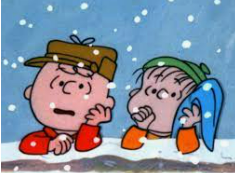Good Grief: Adjusting to Short Winter Days
December 14, 2021, By Ashley Agnew:
This is a great season for togetherness, celebration, and heart-warming holiday movies. One of our favorites is the classic ‘A Charlie Brown Christmas’ where the lead character tries to navigate his inexplicable annual depression around Christmastime.

(image sourced from voices.washingtonpost.com 12/14/21)
The reasons may be different, but the beloved character is certainly not alone in his woe. When fall turns into winter and the days grow shorter, some people experience SAD, or seasonal affective disorder (also known as winter depression). SAD feels just like non-seasonal depression. The only difference is that it starts in the darker months of the fall or winter, and it usually happens in multiple years around the same time.
Depression looks different for everyone, but there are two common factors. When people are depressed, they either feel sad a lot of the time, and/or they lose interest in things they usually like. They may also experience low self-esteem, difficulty concentrating, low energy, weight gain, isolation, and excessive sleepiness. During a season that is incredibly busy, it is easy to see how these symptoms can quickly compound.
If you notice some of these symptoms over the next month or two (or three here in New England), consider seeing a mental health professional. You don’t need to suffer quietly all winter.
The most likely cause of SAD is a lack of sunlight, which becomes more of a problem as the days shorten. You may start work in the morning when it’s dark, and by the time you finish, it’s dark again. But sunlight is essential for two reasons:
- Sunlight signals your body to produce vitamin D, which helps ward off depression.
- Sunlight helps govern your circadian rhythms, the physiological cues that tell your body when to sleep and when to wake up. When this gets out of alignment, it leads to poor sleep, which can cause depression.
Light therapy is a simple way to replace this important process. By using a special, medically approved light source for half an hour every day, you can stimulate your brain to respond the way it responds to sunlight. Other effective treatments include medication and traditional therapy.
Here are a couple other things to consider about SAD:
- Around 4% of people in the United States (13 million people) experience moderate to severe SAD. It is considered a type of major depressive disorder, meaning the depression is experienced multiple times, and, in this case, you experience it in a predictable seasonal pattern.
- SAD usually begins in your 20s or 30s. Even if you are older, you may not have made the connection between the time of year and your mental health.
If you think you have experienced SAD in the past, or if you notice any symptoms this fall or winter, please talk to your doctor, therapist, or psychiatrist. If you are a Centerpoint client who is not sure whether your plan covers mental health care, let us know, and we will walk you through your benefits.
We hope you have a pleasant and healthy winter.
Kindly note that in accordance with the market holidays and hours, our office will be closed on 12/24/2021 for the day, and at 4pm on 12/31/21.
